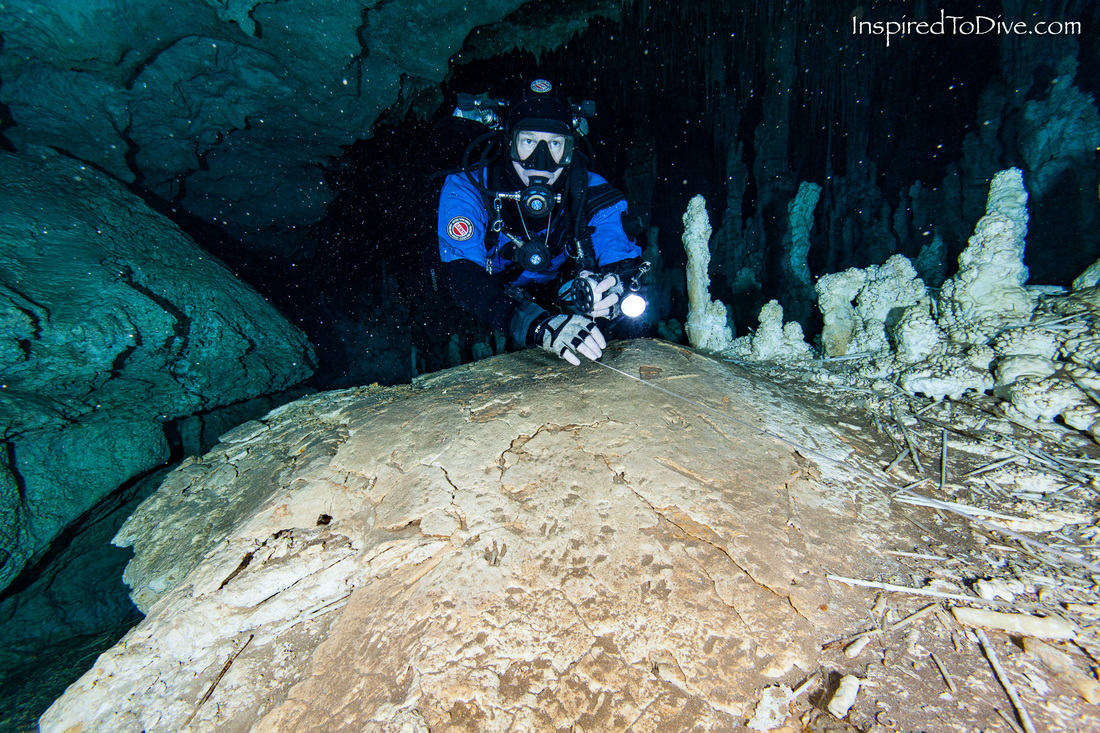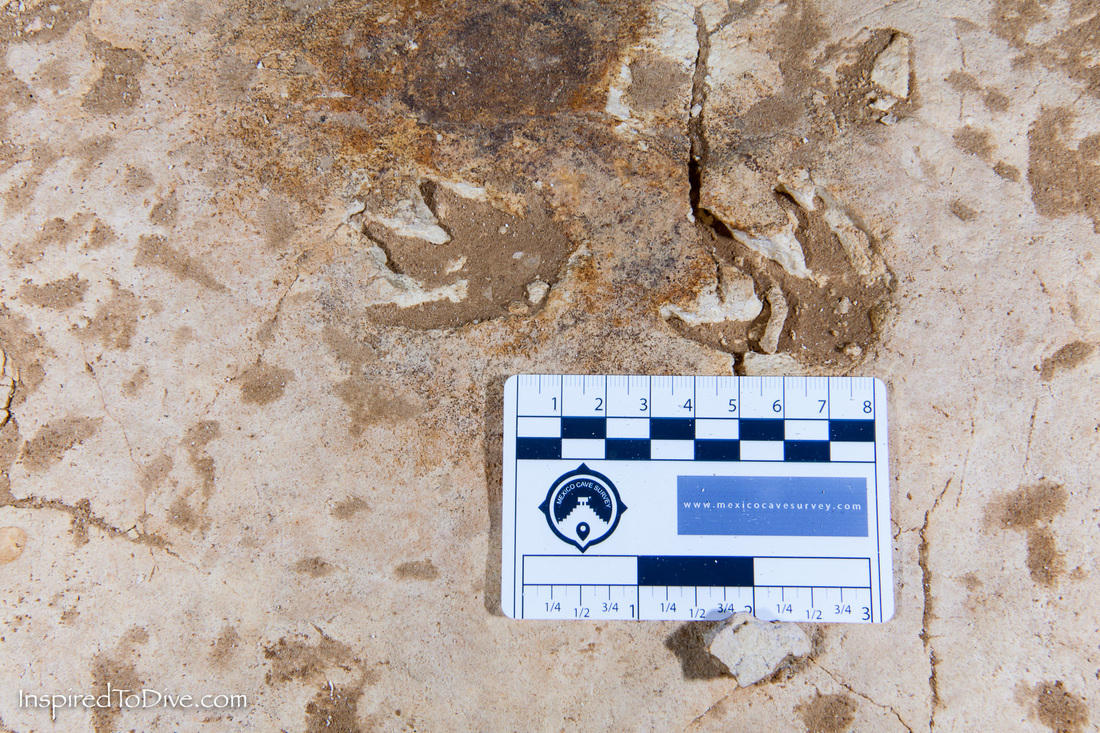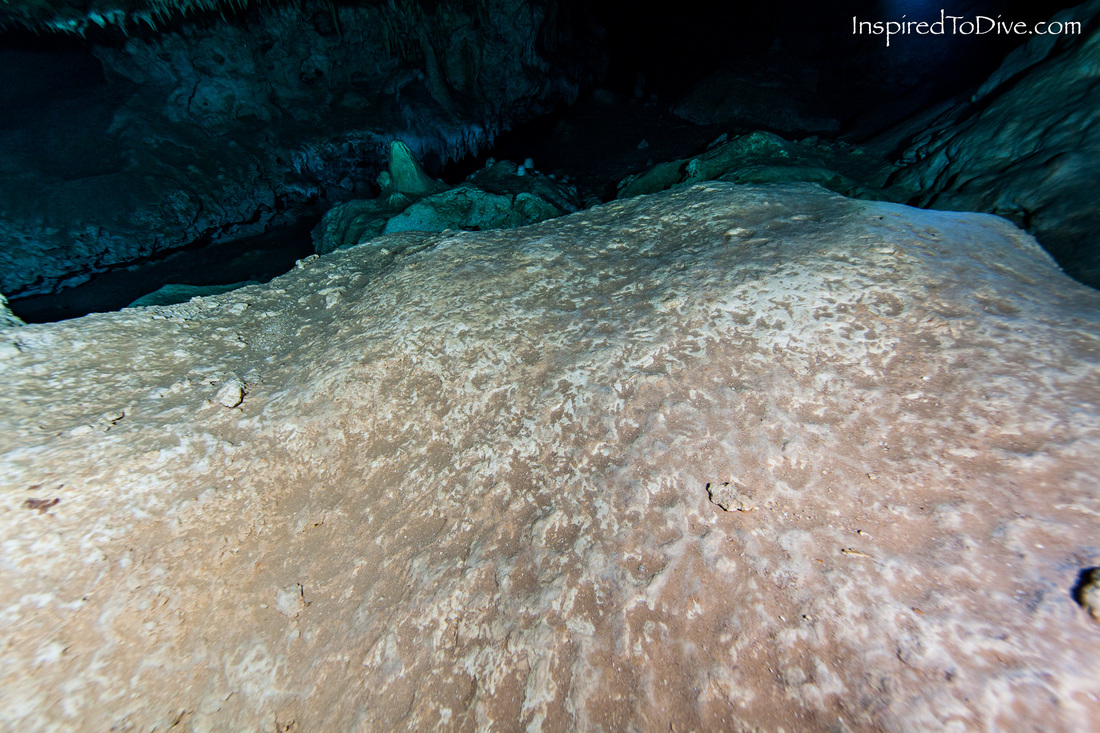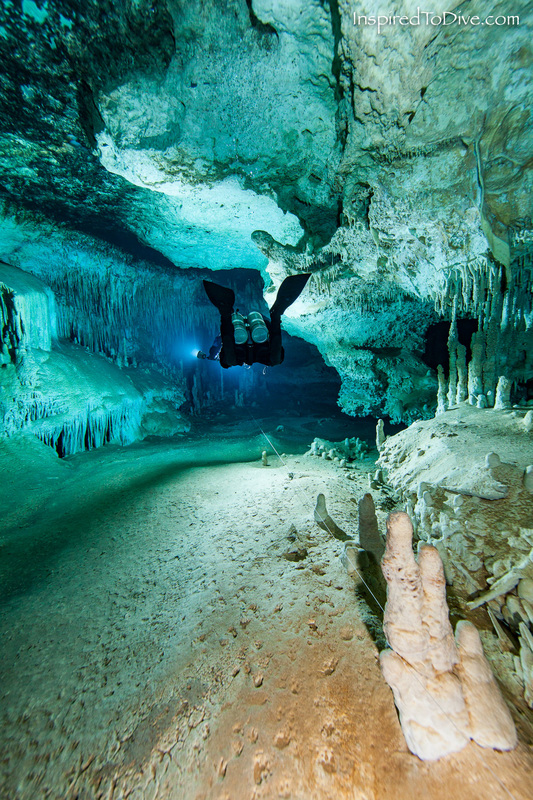While many consider the deep ocean to be the last great unexplored frontier on planet Earth, cave divers are quietly travelling kilometres underwater and underground, and returning with extraordinary news. Here is evidence of animal tracks from the floors of a submerged cave system in the eastern Yucatan Peninsula in Mexico. Considering that these caves were inundated with water following the last glacial period, this could make the footprints thousands of years old.
When you cave dive there’s a real sense of exploration and that you’re diving where few have travelled before. Deep inside the beating heart of mother Earth, inside her watery system of veins, cave divers are pushing the boundaries of where we’ve been before and what we know about the mysterious underground.
Cave divers Sam Meacham and Alex Alvarez returned from a dive and reported that they had seen what they believed to be footprints in solidified mud on the cave floor; I was skeptical. There was a fair amount of jovial banter and good-natured ribbing between friends. I had to eat my words when Sam produced a GoPro from his pocket and played a video on the tiny screen. He seemed to have something and I was excited.
Cave divers Sam Meacham and Alex Alvarez returned from a dive and reported that they had seen what they believed to be footprints in solidified mud on the cave floor; I was skeptical. There was a fair amount of jovial banter and good-natured ribbing between friends. I had to eat my words when Sam produced a GoPro from his pocket and played a video on the tiny screen. He seemed to have something and I was excited.
Neatly imprinted in mud as if they walked there only yesterday were 3 and 4-toed pawprints from a small animal. Suspended in water, breathing compressed gas from a scuba tank, you might imagine how startling this would be to a cave diver making a foray into the lightless tunnels. My heart nearly leapt out of my chest the first time I saw the prints.
To visit the cave at a time when it was dry enough to have a muddy floor on which to record animal footsteps would be to visit the cave not hundreds of years ago, but thousands. The Mexican caves of the Yucatan Peninsula were dry during the last ice age of the Pleistocene when global sea level was lower. When the glaciers melted they released their trapped water into the ocean and flooded the caves.
To visit the cave at a time when it was dry enough to have a muddy floor on which to record animal footsteps would be to visit the cave not hundreds of years ago, but thousands. The Mexican caves of the Yucatan Peninsula were dry during the last ice age of the Pleistocene when global sea level was lower. When the glaciers melted they released their trapped water into the ocean and flooded the caves.
Animal tracks have now been recorded from several different locations within the Sac Actun cave system. I believe that the footprints come from an animal similar to a paca (Agouti paca / Cuniculus paca). The paca is a small terrestrial rodent under three feet long that is mainly nocturnal.
In the book Mammals of the Yucatan Peninsula (2009) the paca is described as having “four toes on each forepaw, and five on each hindpaw. Generally, its tracks show only three toes, with non-retractile claws.”1
From the number of tracks now recorded, I assume that there was considerable traffic by animals around the cave. While I don’t know what the animals were doing in there, I do know that these were not the only animals to make their way through the tunnels. Skeletal remains of gomphothere, sabertooth cats, giant ground sloths, bears, tapirs and other animals have been documented from inside the cave systems of the area. The most famous remains are those of Naia, a human skeleton found in the submerged collapse chamber of Hoyo Negro and dated to be between 12,000 and 13,000 years old.2
In the book Mammals of the Yucatan Peninsula (2009) the paca is described as having “four toes on each forepaw, and five on each hindpaw. Generally, its tracks show only three toes, with non-retractile claws.”1
From the number of tracks now recorded, I assume that there was considerable traffic by animals around the cave. While I don’t know what the animals were doing in there, I do know that these were not the only animals to make their way through the tunnels. Skeletal remains of gomphothere, sabertooth cats, giant ground sloths, bears, tapirs and other animals have been documented from inside the cave systems of the area. The most famous remains are those of Naia, a human skeleton found in the submerged collapse chamber of Hoyo Negro and dated to be between 12,000 and 13,000 years old.2
Now that I know that we are cave diving in the footsteps of ancient animals I hope that others can also be on the look out for more sites of interest. It would be great to get a scientist involved so that we can all learn more about the history of the caves and their importance to ancient animals of the Yucatan Peninsula. Perhaps we can harness the power of the citizen scientist and form a collaboration between scientists and cave divers, as has already proved to be so successful on the Hoyo Negro Project, the study of a submerged Paleo-Indian site.
Deep horizontal cave penetration may not be as sexy as deep ocean exploration. It doesn’t involve submersibles and complex space-age-like gadgetry, and there are few living creatures (monsters of the deep) with which to ignite the public imagination. But locked inside water-filled underground chambers are prehistoric clues to ancient civilisations and if cave divers can be alert to these signs and conscious not to disturb the evidence, we can bring these new discoveries into the light for all to see.
Deep horizontal cave penetration may not be as sexy as deep ocean exploration. It doesn’t involve submersibles and complex space-age-like gadgetry, and there are few living creatures (monsters of the deep) with which to ignite the public imagination. But locked inside water-filled underground chambers are prehistoric clues to ancient civilisations and if cave divers can be alert to these signs and conscious not to disturb the evidence, we can bring these new discoveries into the light for all to see.
References
1. Biol. Carlos Alcerreca A., Biol. Rafael Robles de B., Biol. Luis Pereira Lara, Biol. Diana Antochew Alonzo, Dr. Fiona Reid. (2009) Mammals of the Yucatan Peninsula. Mexico: Editorial Dante S.A. de C.V., pp. 228-229.
2. James C. Chatters, Douglas J. Kennett, Yemane Asmerom, Brian M. Kemp, Victor Polyak, Alberto Nava Blank, Patricia A. Beddows, Eduard Reinhardt, Joaquin Arroyo-Cabrales, Deborah A. Bolnick, Ripan S. Malhi, Brendan J. Culleton, Pilar Luna Erreguerena, Dominique Rissolo, Shanti Morell-Hart, Thomas W. Stafford Jr. (2014) Late Pleistocene Human Skeleton and mtDNA Link Paleoamericans and Modern Native Americans. Science, 344(6185), pp. 750-754.






 RSS Feed
RSS Feed

